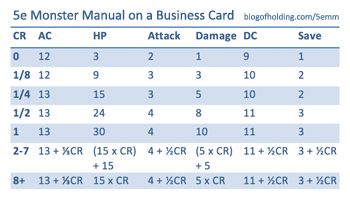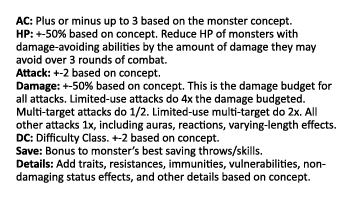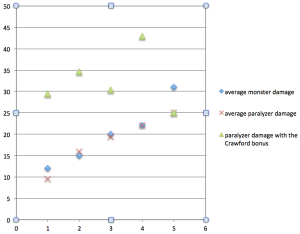The business card guy makes claims far stronger than his stats demonstrate. I'd even say dishonestly.
His analysis of how the DMG rules work doesn't reflect actually using the DMG rules, but a common misunderstanding of how to use them. (Ie, the idea that the HP column for CR 3 means that typical CR 3 monsters should have that much HP: this is explicitly not what the DMG table means).
He did a handful of correlations, found nothing, and then
asserted there is no correlations between stats, and then after assuming that discarded entire possibilities.
I mean,
This is a complete misunderstanding of how the DMG monster CR evaluation table works!
The guy even talks about variance and describes it as if it was standard deviation. This is a stats 101 error; imagine if you where describing car stats and you called the wheels "axles". The data might be right, but this is really suspicious. And he doesn't provide raw data, so it is
hard to confirm he isn't making math mistakes; he provides charts and the results of the math. To find errors you'd have to repeat all of his research, instead of just verifying it.
I mean like here:
I’m pretty close to finishing up my monster design guidelines based on reverse-engineering the Monster Manual. Before that, though, I want to comment on an interesting episode of DM’s D…
www.blogofholding.com
he takes a comment about paralysis, then
assumes that damage is balanced against damage, and then proceeds to conclude the comment is wrong. He does this because he has concluded
damage is not balanced against defence and acts 100% certain of it, despite never testing his hypothesis.
Basically he's insanely too certain for his claims. He does a bit of math, gets a result he likes, and concludes he's certain and never has to consider alternatives again. High-grade Engineers disease.
Like, take a completely random 5e monster (I used an app, and discarded the CR 1/4 one I got first) a Fomorian.
Offensive CR: 10
Defensive CR: 6
Proficiency Bonus: +3
Effective HP: 149 (13d12+65)
Effective AC: 14
Average Damage Per Round: 59
Effective Attack Bonus: +9
Challenge Rating: 8
Hey look, the DMG calculated its CR exactly.
Now lets use MM on a business card. CR 8 eh?
13+4 AC (17)
120 HP
+8 ATK
40 damage
15 save DC
+7 highest saves
That isn't a Fomorian. It has too much AC, not enough HP and damage is too low.
If you feed it back into the DMG rules... I get a CR 6 monster, significantly weaker than the Fomorian.
Despite the numbers being averages and interpolations of the monster manual numbers, a
completely random MM monster turns out to produce the accurate CR under the DMG mathematics, and the blog of holding monster ... is significantly weaker than the random MM monster.
He's confident, uses math, and is just plain wrong. He doesn't expose enough of the math to make it easy to figure out what he did wrong. To demonstrate his error, you'd have to
repeat the entire task, which is the opposite if how you are supposed to use math to prove a point.
Don't use MM on a business card.






